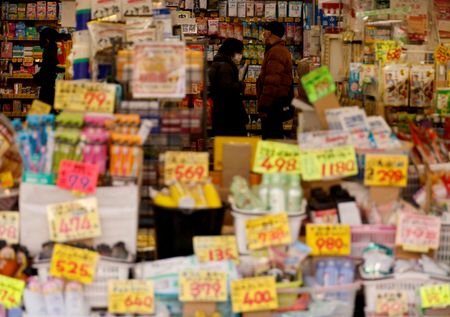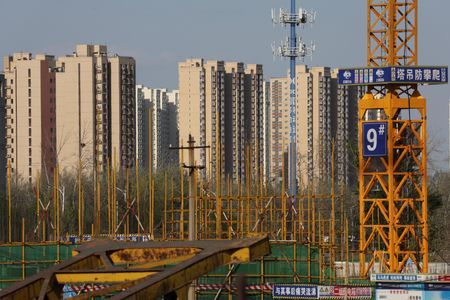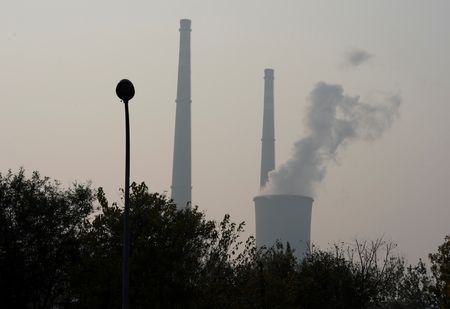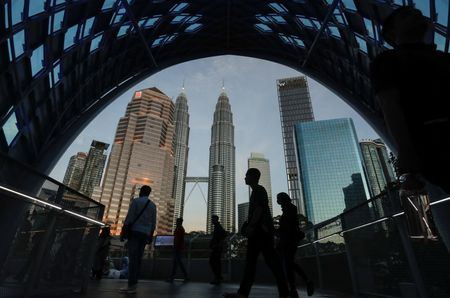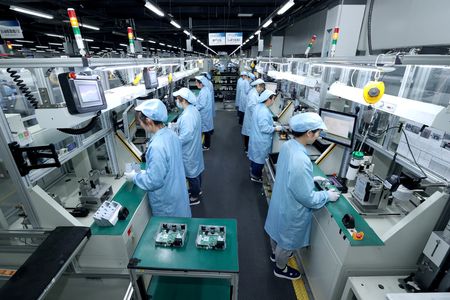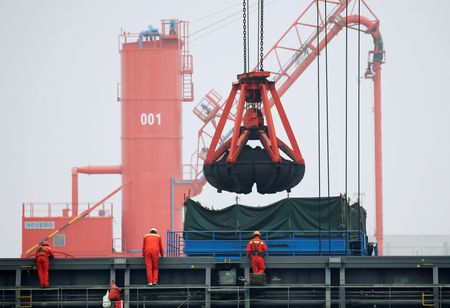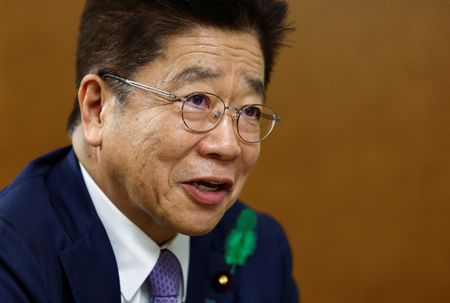By Makiko Yamazaki and Kantaro Komiya
TOKYO (Reuters) -Japan’s economy grew much faster than expected in the second quarter as export volumes held up well against new U.S. tariffs, giving the central bank some of the conditions it needs to resume interest rate hikes this year.
Gross domestic product (GDP) rose 1.0% on an annualised basis, government data showed on Friday, marking the fifth straight quarter of expansion after the previous quarter’s contraction was revised to growth.
However, analysts warn global economic uncertainties fuelled by U.S. tariffs could weigh on the world’s fourth-largest economy in the coming months, especially as automakers struggle to keep prices down for American customers.
“The April-June data masked the real effect of Trump’s tariffs,” said Takumi Tsunoda, senior economist at Shinkin Central Bank Research Institute. “Exports were strong thanks to solid car shipment volumes and last-minute demand from Asian tech manufacturers ahead of some sectoral tariffs. But these aren’t sustainable at all.”
The increase in GDP was helped by surprisingly resilient exports and capital expenditure and compared with median market expectations for a 0.4% gain in a Reuters poll. It followed a 0.6% rise in the previous quarter, which was revised up from a 0.2% contraction.
The reading translates into a quarterly rise of 0.3%, better than the median estimate of a 0.1% uptick.
The strong data contrasts with China, which saw factory output growth hit an eight month low and retail sales slow sharply in July.
Private consumption, which accounts for more than half of Japan’s economic output, rose 0.2%, compared with a market estimate of a 0.1% increase. It grew at the same pace as the previous quarter.
Consumption and wage trends are factors the Bank of Japan is watching to gauge economic strength and determine the timing of its next interest rate action.
Capital spending, a key driver of domestic demand, rose 1.3% in the second quarter, versus a rise of 0.5% in the Reuters poll.
Net external demand, or exports minus imports, contributed 0.3 of a point to growth, versus a 0.8 point negative contribution in the January-March period.
The United States imposed 25% tariffs on automobiles and auto parts in April and threatened 25% levies on most of other Japanese imports. It later struck a trade deal in July that lowered tariffs to 15% in exchange for a U.S.-bound $550 billion Japanese investment package.
Japanese economy minister Ryosei Akazawa told a press conference that the latest GDP results confirmed that the country’s economy was recovering modestly.
“Looking ahead, we expect better employment and income conditions and policy measures to support the modest recovery,” he said. “But we need to be mindful of downside risks from U.S. trade policies.”
Akazawa said the U.S. tariffs are likely to push down Japan’s real GDP by 0.3-0.4%.
The government last week cut its inflation-adjusted growth forecast for this fiscal year to 0.7% from the initially projected 1.2%, predicting U.S. tariffs would slow capital expenditure while persistent inflation weighs on consumption.
Exports have so far avoided a major hit from U.S. tariffs as Japanese automakers, the country’s biggest exporters, have mostly absorbed additional tariff costs by cutting prices in a bid to keep domestic plants running.
The economic resilience, along with a U.S.-Japan trade deal struck last month, supports views the BOJ could hike interest rate later this year.
However, economists expect exports will suffer in the coming months as they start passing on costs to U.S. customers.
“It’s possible the economy could slip into decline in the July-September quarter as exports slow,” Shinichiro Kobayashi, principal economist at Mitsubishi UFJ Research and Consulting, said.
“For the economy to fully pick up, private consumption holds the key. Consumption could improve towards the end of the year as inflation gradually slows and sentiment recovers,” he said.
(Reporting by Makiko Yamazaki and Kantaro Komiya; Editing by Sam Holmes)


